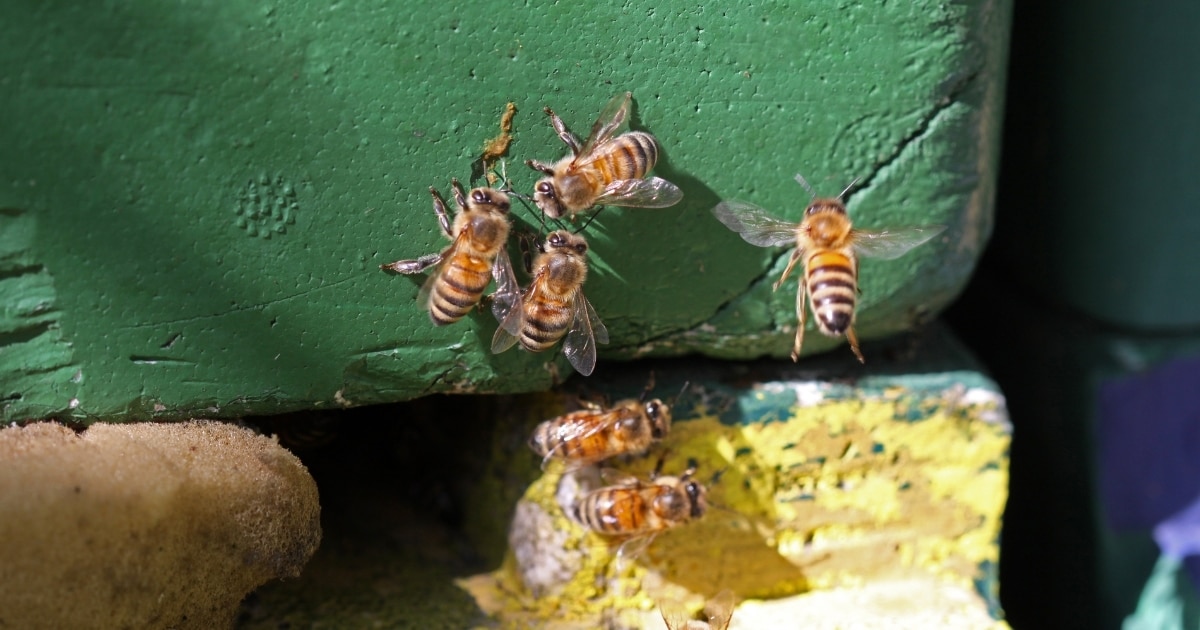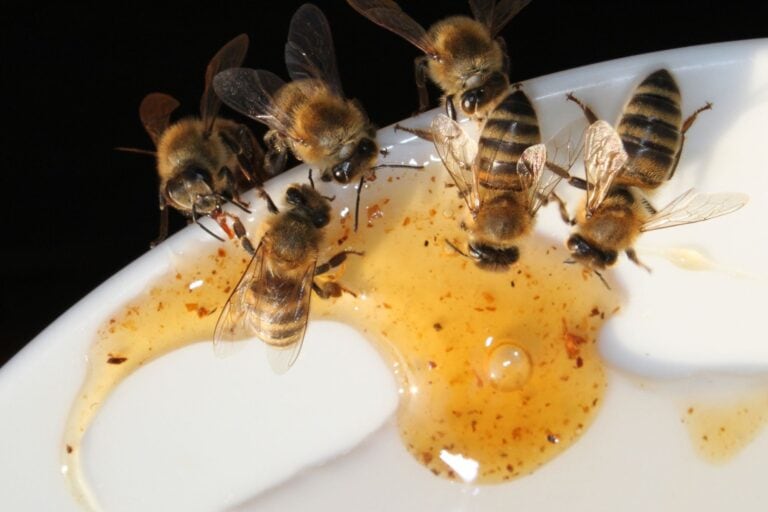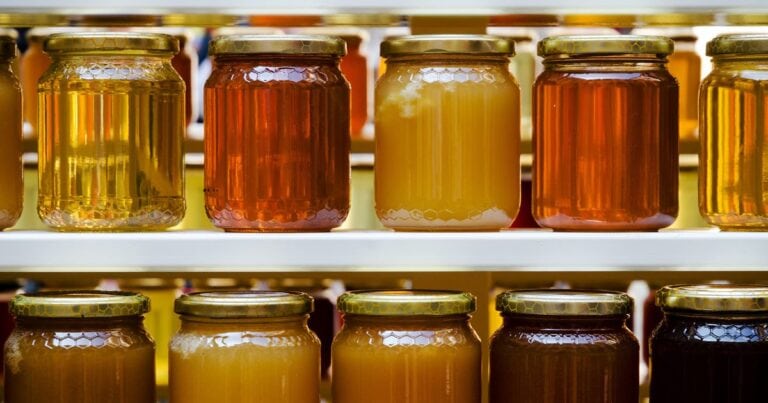Dances with Bees
The waggle dance or wag-tail dance bees perform is fascinating! Find out what research tells us it means.

Perhaps the most fascinating aspect of honey bee behaviour is their ability to communicate details regarding the location of a food source to other individuals in the colony. This information is encoded into a ‘waggle dance’ or ‘wag-tail’ dance that is performed on the surface of the wax comb, and arguably constitutes the only known abstract language other than that used by humans.
Foraging bees returning from an abundant and high-quality source of food (nectar or pollen) will utilise this form of communication in an attempt to recruit other bees to the resource. The dance can also be used to advertise a source of water or a potential new nest site. Although some form of communication between worker bees had long been suspected (and even alluded to by Aristotle), the waggle dance and the dance language of the honey bee was first deciphered by Austrian researcher Dr Karl von Frisch, whose work was rewarded with a Nobel Prize in 1973. A waggle dance consists of the bee repeatedly (up to 100 times or more) running through a figure-eight pattern, at the centre of which is a short and straight ‘waggle run’ accompanied by the rapid vibration of the bee’s abdomen from side to side. At the same time, the bee will emit a low-frequency buzzing sound (created by beating the wings) along with an electric field that may also have a role in communication. Dancing bees release chemicals into the air and may also distribute a sample of the food resource so that other foragers can become acquainted with the taste and smell.
The two vital pieces of information transmitted by the dance are distance and direction. The simplest indicator of the distance to the resource is the duration of the waggle run portion of the dance, between which exists a roughly linear relationship. In other words, the further the distance, the longer the waggle run. Dance tempo and the duration of buzzing may also be correlated with distance. The orientation that the bee adopts during the waggle phase indicates direction relative to the position of the sun. A vertical waggle run means that the resource may be found by travelling directly towards the sun, whereas a dance that is performed at an angle of 45 degrees to the right of vertical indicates that the resource is located 45 degrees to the right of the sun. Obviously, the position of the sun will change during the day, and bees have been found to adjust the angle of their dances accordingly, so that the direction to the resource remains accurate. If the resource is close to the hive (less than about 150 metres), the waggle phase of the dance may be truncated, in what has become known as a ‘round’ dance. This conveys an indication of distance (i.e. nearby), but not direction.
Sometimes, dancing bees may compete for the attention of potential recruits and can attempt to disrupt the dances of others. The level of excitement regarding the resource is evident in the speed of the waggle. Researchers have also found that the presence of a dead bee on a flower will result in far fewer waggle dances. Presumably this is interpreted by the foraging bees as an indication of possible predators.
Critics of the importance of the waggle dance argue that traces of floral odours found on foraging bees’ bodies are of far greater assistance in helping other bees to locate the resource. Experiments have shown that a majority of bees often choose to ignore the information imparted in a waggle dance and instead prefer to return to a resource they have previously visited. However, this may be because, due to prevailing weather, food source characteristics and other factors, the information
rapidly becomes obsolete, or because there is an abundance of food available. The foraging activities of honey bees in tropical regions have been found to be severely impaired when they are prevented from communicating via the waggle dance, and this is believed to reflect the patchiness of resources in these environments.
Different species of bees exhibit different variations of the waggle dance, but over time they have demonstrated the ability to learn one another’s ‘dialects’. Honey bees’ proven capacity to convey complicated spatial information via the waggle dance is undoubtedly one of the most striking examples of communication in the animal kingdom.



